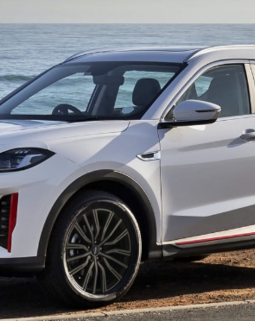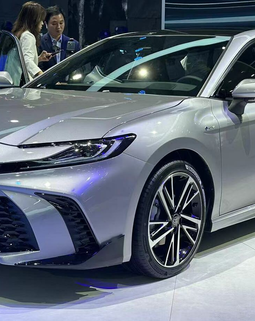Introduction
In a significant leap towards sustainable transportation, Toyota has successfully conducted a demo run of its Hilux Mild Hybrid Electric Vehicle (MHEV) in Kenya. This pioneering initiative showcases Toyota's commitment to reducing the carbon footprint in the automotive industry while providing efficient and eco-friendly mobility solutions. In this article, we delve into the details of this remarkable demonstration, highlighting the key features and potential impacts of the Hilux MHEV in Kenya.
Hybrid Powertrain
The Hilux MHEV is equipped with a cutting-edge hybrid powertrain that combines a traditional internal combustion engine with an electric motor. This synergy not only enhances fuel efficiency but also reduces emissions, making it an ideal choice for environmentally conscious consumers.
Regenerative Braking
Toyota's regenerative braking system is a standout feature of the Hilux MHEV. It harnesses energy during braking and converts it into electricity, which is stored in the vehicle's battery. This innovative technology not only improves fuel economy but also extends the vehicle's electric-only driving range.
Electric-Only Mode
One of the notable features of the Hilux MHEV is its electric-only driving mode. This mode allows the vehicle to operate solely on electric power, emitting zero tailpipe emissions. This is particularly beneficial in urban environments where air quality is a concern.
Improved Fuel Economy
The hybrid powertrain of the Hilux MHEV contributes to remarkable improvements in fuel economy. This not only reduces the cost of ownership for consumers but also decreases the overall carbon footprint of the vehicle.
Enhanced Off-Roading Capability
Despite its eco-friendly features, the Hilux MHEV doesn't compromise on performance. It retains its renowned off-roading capability, making it a versatile choice for both urban and rural environments in Kenya.
Environmental Benefits
Kenya, like many nations, faces environmental challenges related to air pollution and carbon emissions. The introduction of eco-friendly vehicles like the Hilux MHEV can significantly reduce the environmental impact of the transportation sector, contributing to cleaner air and a healthier environment.
Economic Advantages
With improved fuel economy, the Hilux MHEV can offer substantial economic benefits to Kenyan consumers and businesses. Lower fuel costs can translate into significant savings over time, making hybrid vehicles an attractive option for a wide range of users.
Technological Advancement
Toyota's demonstration of the Hilux MHEV in Kenya highlights the country's readiness to embrace cutting-edge automotive technologies. It sets a precedent for the adoption of hybrid and electric vehicles in the region, paving the way for future innovations.
Urban Mobility Solutions
The electric-only mode of the Hilux MHEV is well-suited for urban commuting. As Kenya's urban areas continue to grow, this hybrid vehicle can provide a sustainable solution to address transportation challenges while reducing urban pollution.
Access To Clean Energy
As Kenya progresses in its renewable energy initiatives, the Hilux MHEV aligns with the country's broader goals of utilizing clean energy sources. The integration of electric vehicles with renewable energy infrastructure can further reduce the carbon footprint of transportation.
Conclusion
Toyota's successful demonstration of the Hilux Mild Hybrid Electric Vehicle in Kenya marks a significant milestone in the country's automotive landscape. With its eco-friendly features, improved fuel economy, and urban mobility solutions, the Hilux MHEV has the potential to contribute positively to Kenya's environment, economy, and technological advancement. As the automotive industry continues to evolve, such innovations represent a promising step towards a more sustainable future in Kenya and beyond.





